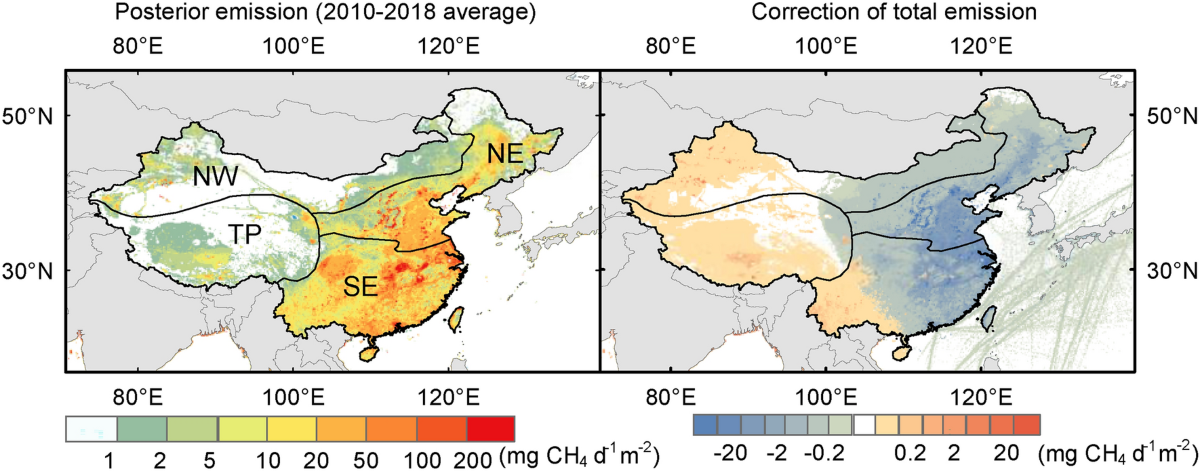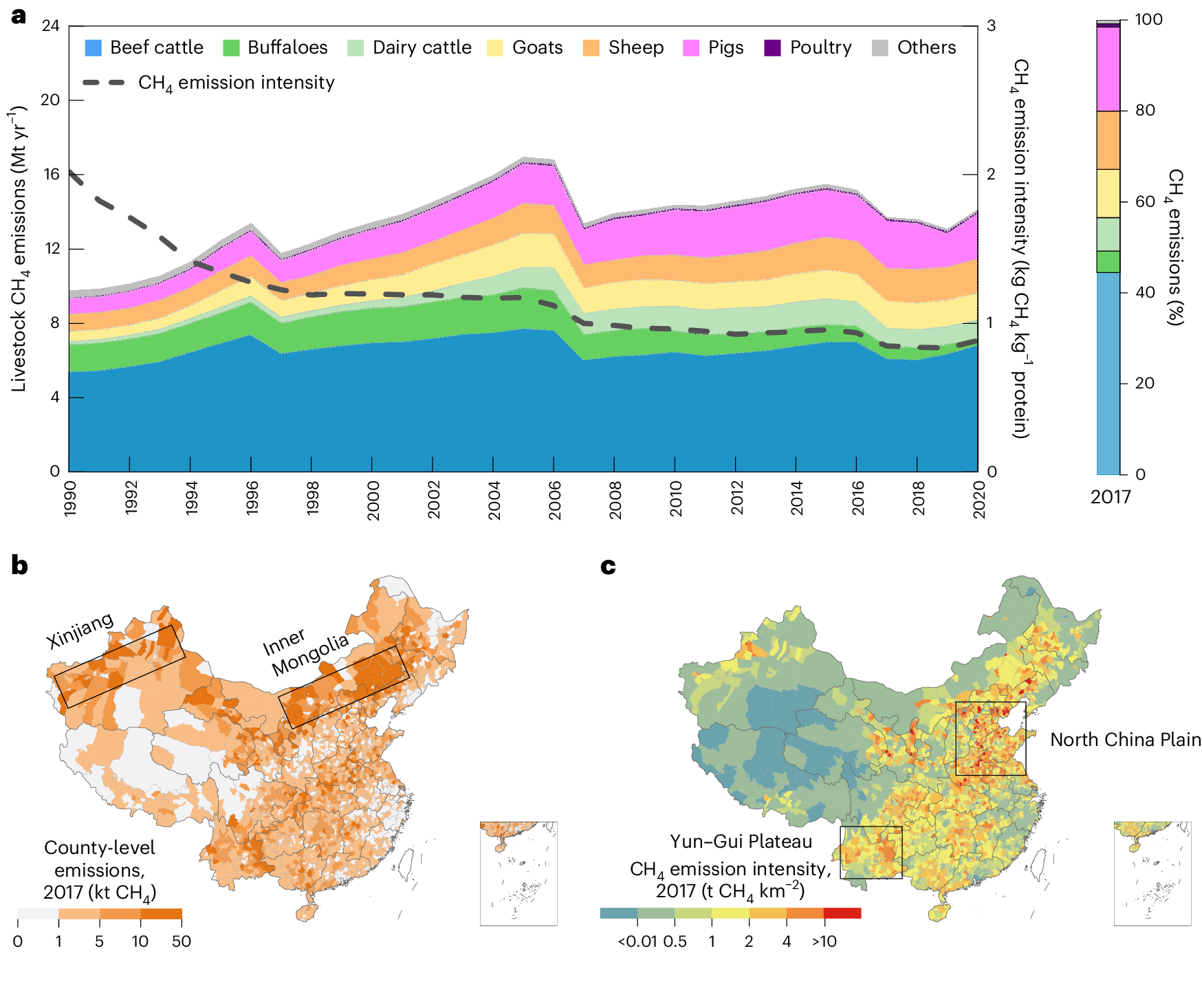How Much Methane Is China Producing and Why It Matters
Climate change researcher promoting global sustainability initiatives.

Climate change researcher promoting global sustainability initiatives.

China stands as the world's largest emitter of methane, contributing nearly 10% of global human-caused methane emissions. According to estimates, China's annual methane output ranges between 58 million to 65 million tonnes, translating to approximately 1.7 to 1.9 billion tonnes of CO2 equivalent. This significant emission level is alarming, especially considering methane's potency as a greenhouse gas, being over 25 times more effective than CO2 in trapping heat over a 100-year period.
Recent data indicates that methane emissions in China have shown a steady increase over the years. The energy sector, particularly from coal mining, is the largest contributor, accounting for nearly 44% of total emissions. The agricultural sector follows closely, responsible for approximately 42%, while the waste and landfill sectors account for about 10%. This distribution highlights the diverse sources of methane and underscores the complexity of devising effective mitigation strategies.
The energy sector's methane emissions primarily originate from coal mining, where methane leaks during extraction and processing. An estimated 40% of China's methane emissions come from fugitive emissions during coal production. Despite efforts to capture and utilize this methane, significant challenges remain, such as outdated infrastructure and lack of comprehensive monitoring systems.
Agriculture contributes significantly to China's methane output, particularly through livestock production and rice cultivation. Livestock, especially cattle, produce methane through enteric fermentation, while rice paddies emit methane due to anaerobic decomposition processes in flooded fields. Strategies to mitigate emissions in agriculture focus on improving feed efficiency and adopting better water management practices in rice cultivation.
The waste sector represents a critical area for methane emissions, with landfills being a primary source. As urbanization increases, so does the volume of organic waste, leading to heightened methane production. Initiatives to improve waste management, such as recycling and composting, are essential to curtail methane emissions from this sector.
In November 2023, China unveiled its first comprehensive methane emission control action plan, marking a pivotal step in its climate strategy. This plan aims to significantly enhance monitoring, reporting, and verification systems for methane emissions, particularly in the energy, agriculture, and waste sectors. It outlines 20 key tasks to improve emission controls and promote technological innovation.
The action plan sets ambitious targets for 2024, including a gradual elimination of gas flaring in oil and gas production and increasing coal mine methane utilization to 6 billion cubic meters annually. Additionally, by 2030, the plan envisions a decline in methane emissions intensity in agriculture and a substantial increase in the utilization of livestock waste.
Unlike earlier policies that lacked specific targets, the 2023 action plan outlines clear goals and a framework for implementation. However, critics have pointed out that the plan still falls short of establishing binding quantitative targets, which may hinder effective progress in methane reduction.
Methane emissions have profound short-term climate impacts, contributing significantly to global warming. Studies show that reducing methane emissions could mitigate nearly 0.3°C of global temperature rise by the 2040s. Long-term, unchecked methane emissions will exacerbate climate change, affecting agricultural productivity and water resources.
Besides climate impacts, methane poses direct public health risks. It contributes to ground-level ozone formation, which is linked to respiratory diseases and premature deaths. Furthermore, the environmental consequences include biodiversity loss and degradation of ecosystems, highlighting the urgent need for effective mitigation strategies.
As the largest producer of methane, China plays a crucial role in global efforts to combat climate change. Its actions significantly influence international methane reduction initiatives, making its domestic policies and commitments essential for achieving global climate goals.
One of the primary challenges in addressing methane emissions in China is the lack of reliable data. The diffuse nature of methane emissions, particularly from coal mines and agriculture, complicates accurate measurement and reporting. Improving monitoring technologies and systems is critical for establishing effective emission reduction strategies.
Technological limitations, particularly in capturing and utilizing methane from low-concentration sources, pose significant challenges. Furthermore, financial barriers, including high initial investment costs for methane recovery technologies, deter widespread adoption of mitigation measures.
China's regulatory framework for methane emissions control is still in development. Existing policies often lack enforceable standards and comprehensive approaches, leading to inefficiencies in emission reduction efforts. There is a pressing need for a cohesive policy framework that integrates methane mitigation into broader climate strategies.
Improving methane capture technologies in coal mining and enhancing recovery practices in oil and gas production are critical. Establishing strict regulations on methane emissions from these sectors will also play a vital role in mitigation.
Innovative practices in agriculture, such as optimizing livestock feed and enhancing manure management, can substantially reduce methane emissions. Implementing precision farming techniques and promoting alternative crops in rice paddies can yield significant results.
Enhancing waste management practices through recycling, composting, and anaerobic digestion can effectively reduce methane emissions from landfills. Implementing comprehensive waste management systems is essential for mitigating emissions in urban areas.
China’s engagement in international climate dialogues, such as the U.S.-China Joint Glasgow Declaration, presents opportunities for collaboration on methane reduction technologies and best practices. Sharing knowledge and resources can bolster domestic efforts and contribute to global methane mitigation goals.
As China continues to develop its methane reduction strategies, the integration of robust data collection, technological innovation, and comprehensive policy frameworks will be essential. With international cooperation and commitment to emission reduction, China can play a pivotal role in addressing global climate change challenges.
Key Takeaways:




— in Sustainability and Carbon Offsetting
— in Ocean Conservation
— in Renewable Energy
— in Eco-Innovation
— in Renewable Energy